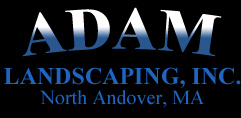|
If we are to be a good working team in the development of your outdoor living space, we need to be speaking the same language. Here are some of the more common landscaping terms. If something comes up during a conversation with us that is unclear, let us know! We want to make sure you are completely satisfied.
Aeration:
The purpose of aeration is to improve the exchange of air between the earth and the atmosphere in an effort to relieve lawn problems. Aeration reduces water runoff and puddling, improves drainage and rooting, reduces soil compaction, releases harmful lawn gases, improves fertilizer uptake and use, increases tolerance to heat and drought, improves resiliency and cushioning and increases tolerances to diseases. Nearly every lawn will benefit from annual aeration.
Annual plants:
Plants that last just a year and bring spring and summer color to your landscape.
Anti-desiccant spray:
Evergreen trees and shrubs can be seriously damaged or killed by dry and cold winter winds. Unprotected plants lose the essential moisture in their leaves or needles when exposed to severe winter weather. This loss of moisture causes browning and lead drop, often leaving the exposed part of the plant stunted, disfigured or dead. Anti-desiccant spray helps retain the moisture necessary to protect from wind burn.
Arborist:
Professionals trained to promote tree health, discern tree problems and take measures to correct them.
Compost:
A mixture of decaying organic matter, as from leaves and manure, that is used as a soil amendment to improve soil structure and provide nutrients. The composting process is largely the result of the activity of aerobic organisms. Compost is the cornerstone of organic gardening.
Cultivars:
Cultivars are propagated not from seed, but rather vegetatively (e.g., via stem cuttings). When the full scientific name for a particular plant cultivar is given, the part of the name that indicates the cultivar itself follows the genus name and the species name and is set off by single quotation marks. By referring to cultivars in this way, we're able to be more specific about a plant than if we restricted ourselves to noting its genus and species.
Deer Away:
This spray for shrubs, flowers and fruit trees uses scent and taste to repel deer. This natural based spray will not harm deer.
De-thatch:
Dethatching is the process of removing that layer of dead and decaying plant tissue that lies between the surface and the green vegetation. The thatch layer hinders lawn growth. This process is usually done in early spring.
Edging:
Garden edging is a line of demarcation that creates visual interest in a landscape by separating one segment of your from another. When used to separate a lawn from adjacent areas, it may also be called "lawn edging." Others prefer the generic "landscape edging" for all uses of edging.
Fertilizer:
Plant food. In terms of your lawn, fertilizer is used to helps to improve the soils fertility and promotes root growth in plant systems. Your lawn is also more resistant to disease when fertilizer is used. There are many different types of fertilizers available for different grasses and that treat a number of concerns.
Hardscape:
Hardscape makes up the inanimate elements of landscaping, especially any masonry work or woodwork. For instance, stone walls, concrete or brick patios, tile paths, wooden decks and wooden arbors would all be considered part of the hardscape. Hardscape can include water fountains, statuary and other inanimate objects.
Hydro Seeding:
Hydro seeding is a fast and effective way to establish a new lawn without using sod. A mixture of mulch, fertilizer, seed and water forms a slurry which is then uniformly sprayed on newly prepped areas for quick and superior lawn growth.
Lime:
Lime is added when we aerate to sweeten the soil by improving the acid level. Lime is extremely important for growing healthy turf. Lime will help to improve lawn color and density, helps in controlling thatch and increases root development.
Mulch:
Mulch, or bark mulch, is a covering placed around plants (or covering the ground in lieu of plants), to prevent the growth of weeds. If placed around plants, mulch provides additional benefits, including the decrease of erosion and water loss, and the regulation of soil temperature. In addition, upon decomposition (for organic mulches), mulches serve as soil amendments. Mulch also adds a decorative element to your beds as it comes in several shades. Mulch selection is usually based on appearance, as well as on all the practical considerations mentioned above.
Perennial plants:
Plants that live on for additional years after they have been planted when compared to annual plants.
Slice Seeding:
Slice seeding does exactly as the name implies. Using a machine with multiple blades that vertically slices through existing turf, the seed is applied directly to the soil for better seed/soil contact. Generally used for lawn renovation, patch work or thickening existing turf.
Sod:
Sod is mature lawn that has been professionally cultivated and is best used for starting new lawn. Professional sod comes either in large squares or in rolls, with both lawn and soil that can be laid down on prepared ground.
Softscape:
Softscape makes up the animate, horticultural elements of landscape design, i.e., plants. Softscape elements are complemented by hardscape design elements, such as stone walls, tile patios and brick walkways.
Turf:
The surface layer of fields and pastures, consisting of earth containing a dense growth of grasses with their roots; sod.
|

